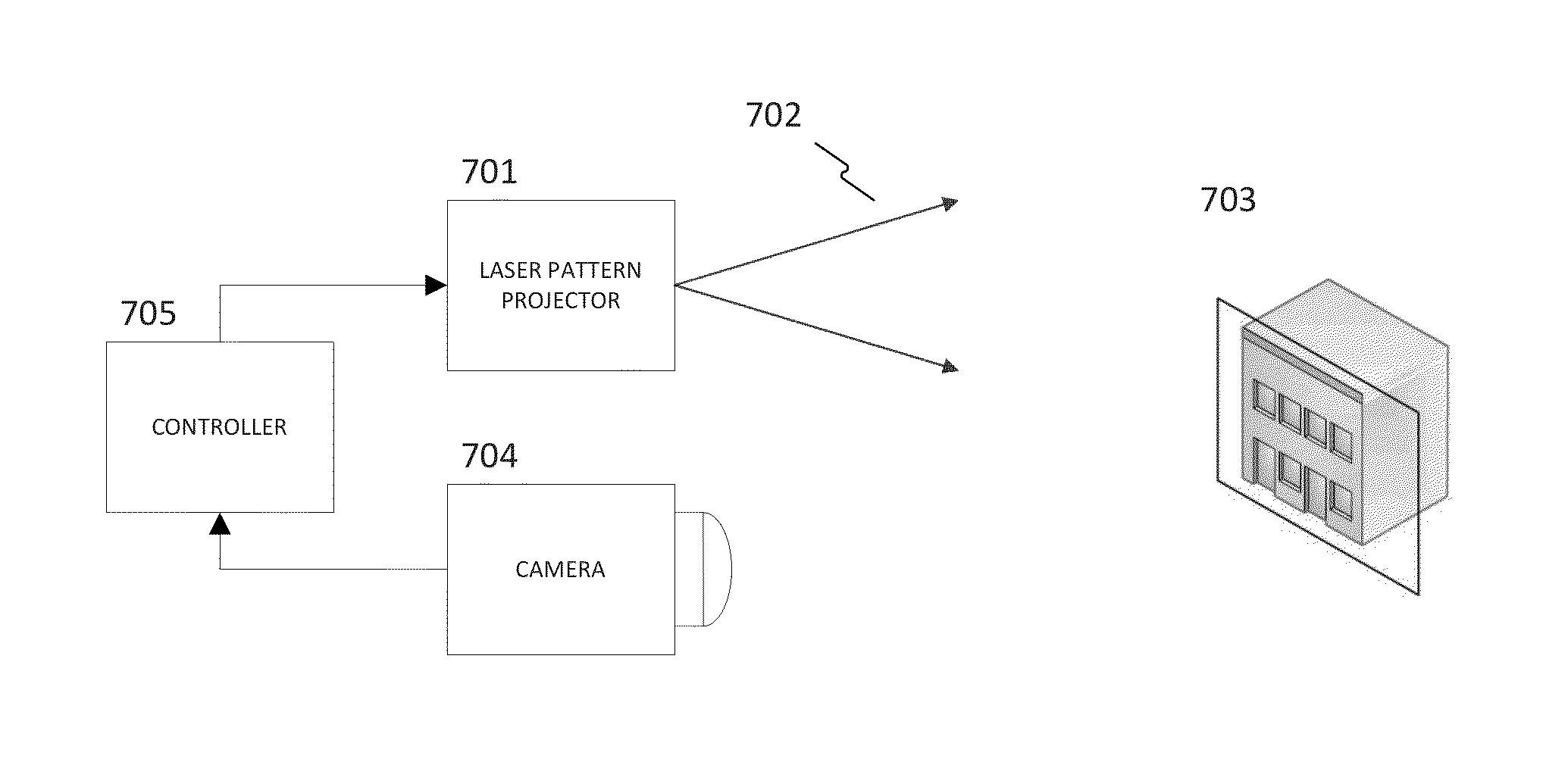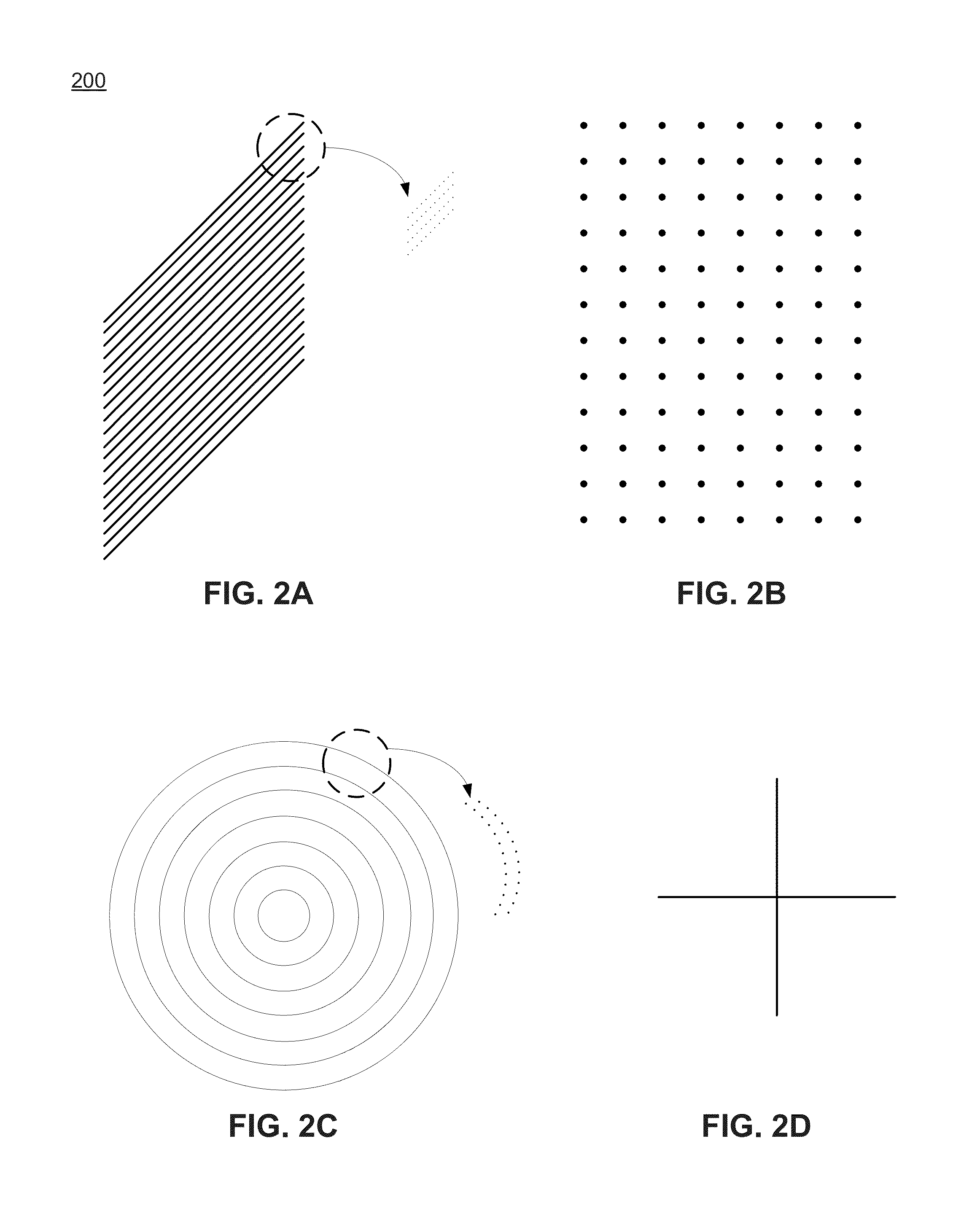Laser beam pattern projector
a laser beam and pattern technology, applied in the field of laser beam pattern projectors, can solve the problems of limited effectiveness of existing directed energy systems utilizing lasers, ineffective existing systems when applied to large geographic areas, and limited application rang
- Summary
- Abstract
- Description
- Claims
- Application Information
AI Technical Summary
Benefits of technology
Problems solved by technology
Method used
Image
Examples
Embodiment Construction
[0018]Reference will now be made in detail to embodiments, examples of which are illustrated in the accompanying drawings. Wherever possible, the same reference numbers will be used throughout the drawings to refer to the same or like parts.
[0019]FIG. 1 shows a block diagram illustrating components in system 100 for creating an area of denied visual access. As shown in FIG. 1, system 100 comprises a light source 110 and a diffractive optic element 140. Light source 110 may be, for example, a laser or a partially coherent light source. Lasers may be, for example, a laser diode, a solid state laser, or a gas laser. In certain embodiments, light source 110 may be a green diode-pumped solid state (DPSS) laser. DPSS lasers may operate in continuous wave (CW), quasi-CW, analog modulated, or pulsed mode. The laser wavelength may be chosen based on the application, with exemplars of near UV or visible for biological visual systems (for example, human eyes), and the full range of optical wav...
PUM
| Property | Measurement | Unit |
|---|---|---|
| wavelengths | aaaaa | aaaaa |
| wavelengths | aaaaa | aaaaa |
| wavelength | aaaaa | aaaaa |
Abstract
Description
Claims
Application Information
 Login to View More
Login to View More - R&D
- Intellectual Property
- Life Sciences
- Materials
- Tech Scout
- Unparalleled Data Quality
- Higher Quality Content
- 60% Fewer Hallucinations
Browse by: Latest US Patents, China's latest patents, Technical Efficacy Thesaurus, Application Domain, Technology Topic, Popular Technical Reports.
© 2025 PatSnap. All rights reserved.Legal|Privacy policy|Modern Slavery Act Transparency Statement|Sitemap|About US| Contact US: help@patsnap.com



